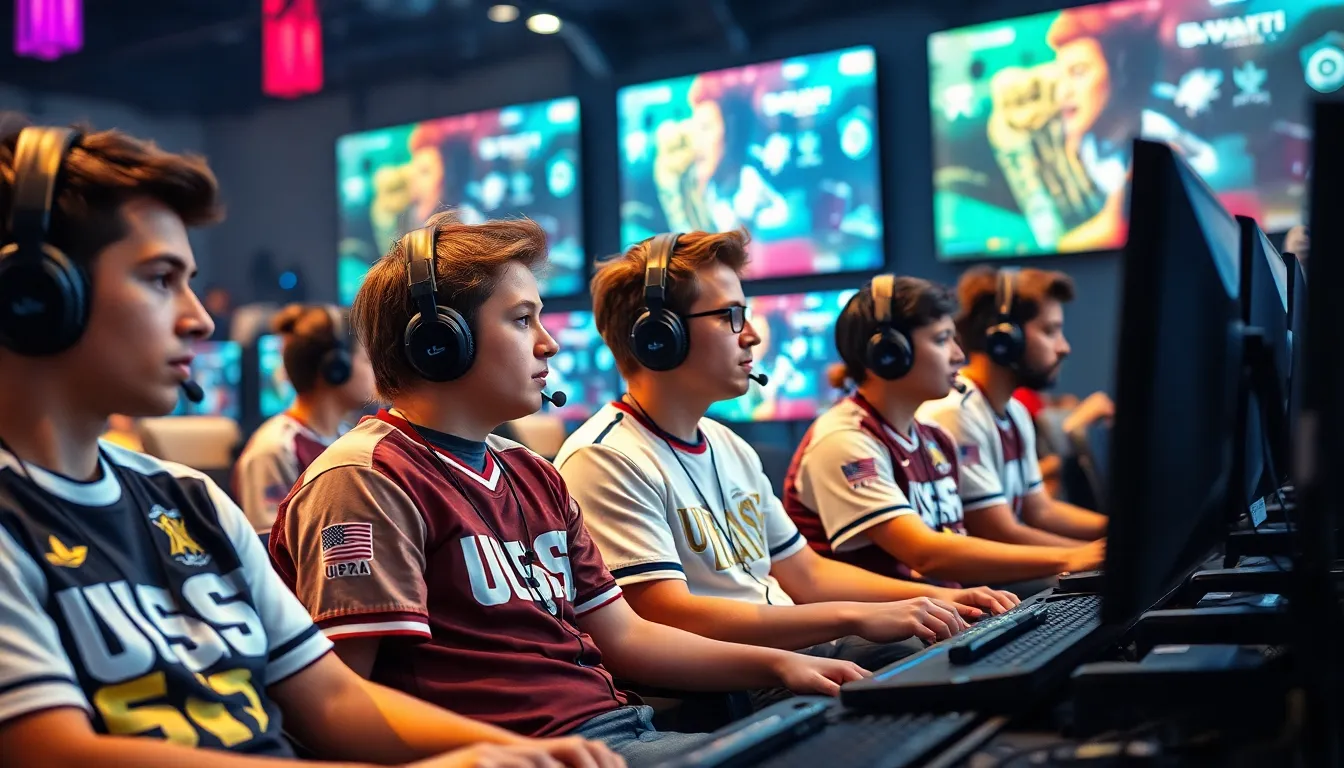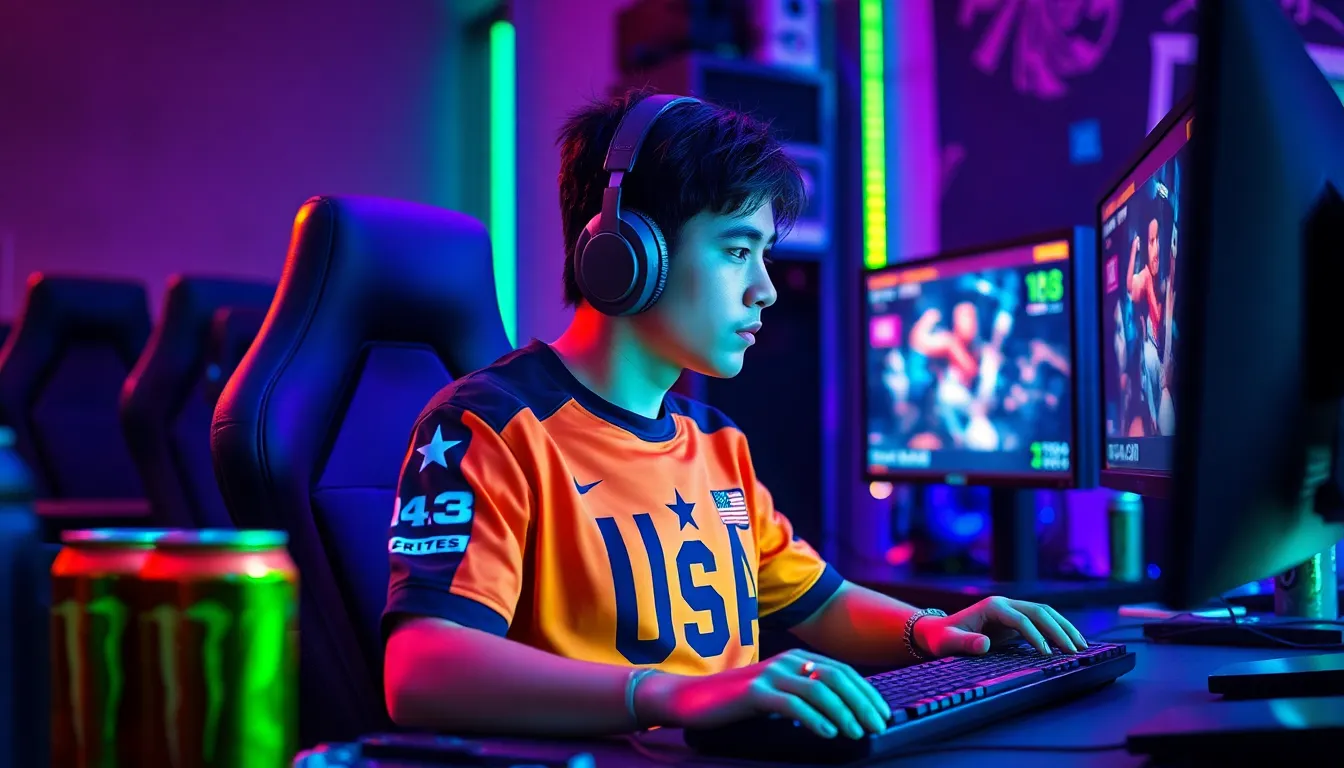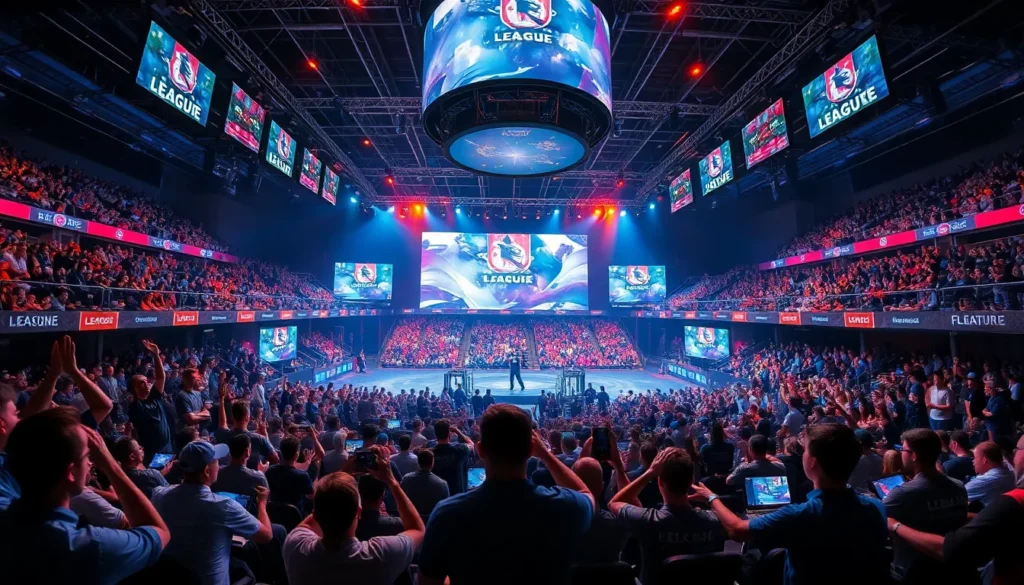In a world where gaming isn’t just a hobby but a full-blown career, esports organizations are the rock stars of the digital arena. They’re not just assembling teams; they’re crafting legends, turning ordinary players into household names faster than you can say “headshot.” With millions of fans cheering from the sidelines—often while munching on snacks that may or may not be healthy—these organizations are shaping the future of competitive gaming.
Table of Contents
ToggleOverview of Esports Organizations
Esports organizations serve as the backbone of competitive gaming, shaping the industry in various ways. These entities manage professional teams, handle sponsorship deals, and promote events, creating a structured environment for players to thrive. Significant organizations, such as Team Liquid and Fnatic, not only compete in numerous games but also cultivate talent through rigorous training programs.
Professional esports teams consist of skilled players who specialize in specific titles, enabling them to excel in tournaments. Many organizations invest heavily in recruiting top talent, scouting players from around the world to represent them in competitions. Notable successes from these teams often translate into increased popularity and fan engagement.
Funding plays a crucial role in the sustainability of esports organizations. Sponsorships from major brands augment their resources, helping them secure training facilities and coaching staff. The financial backing also allows teams to participate in high-stakes tournaments that can yield significant prize money.
As the esports ecosystem expands, organizations explore various revenue streams. Merchandise sales, content creation, and streaming partnerships provide additional income. Players frequently engage with fans through social media platforms, enhancing brand loyalty and visibility.
Diverse esports titles, including League of Legends and Dota 2, attract different audiences and require strategic approaches from organizations. Adaptation to market trends and community preferences becomes essential for maintaining relevance in this rapidly evolving landscape. By focusing on innovation and community engagement, esports organizations continue to influence the future of competitive gaming.
Types of Esports Organizations

Esports organizations encompass various roles critical to the competitive gaming landscape. Their functions range from managing professional teams to hosting tournaments and facilitating streaming experiences.
Professional Teams
Professional teams form the backbone of esports organizations. These entities recruit skilled players, providing them with the necessary support for success. Mentorship and training programs deepen player development, fostering talent from diverse backgrounds. Organizations emphasize teamwork along with strategy, enhancing game performance. They often sign contracts with players, securing their commitment for seasons or tournaments. Key players become recognizable figures, drawing fans and building brand loyalty.
Tournament Organizers
Tournament organizers specialize in hosting competitive events. Large organizations often manage these tournaments, ensuring smooth operations from setup to execution. They negotiate with game developers and sponsors to secure funding and resources. Prize pools often reach high figures, attracting top-tier talent and increasing viewership. Engaging experiences shape participants and audiences, promoting community involvement. Successful organizers understand market trends and adapt to audience preferences, ensuring relevance in the fast-growing esports sector.
Streaming Platforms
Streaming platforms play a significant role in the esports ecosystem. These platforms provide a space for fans to watch live competitions and interact with players. Partnerships with organizations enhance visibility for both players and events. Various platforms cater to different audiences, maximizing outreach. Features like chat functions and subscription services build community engagement. Content creators often emerge from these platforms, contributing to the overall growth of esports and enhancing brand recognition. esports organizations benefit from these collaborations, broadening their fan base and increasing their market presence.
Key Players in the Industry
Esports organizations thrive on the synergy of teams and personalities, shaping competitive gaming today. Their contributions significantly elevate the esports landscape.
Major Teams
Team Liquid, Fnatic, and Evil Geniuses lead the competitive scene. Each organization showcases remarkable talent through their carefully crafted rosters. Team Liquid excels in League of Legends and Dota 2, consistently placing in the top tier of tournaments. Fnatic commands attention in titles like Counter-Strike: Global Offensive, with numerous championships under its belt. Evil Geniuses extends its influence through diverse games and investors who support strategic growth. The commitment to nurturing players creates legendary competitors who inspire thousands worldwide.
Influential Personalities
Players like Johan “N0tail” Sundstein and Lee “Faker” Sang-hyeok have become icons in the esports realm. N0tail’s leadership has propelled OG to multiple Dota 2 major titles. Faker’s skill in League of Legends has earned him the title of the “Face of LoL,” with millions of fans following his career. Coaches and analysts play pivotal roles, shaping team strategies and refining player skills. Influencers within these organizations leverage social media for fan engagement, promoting a deeper connection between players and supporters. Through their actions, these personalities elevate the entire esports community.
Business Models of Esports Organizations
Esports organizations leverage various business models to thrive in the competitive landscape. These models include sponsorships, merchandising, and other revenue-generating strategies.
Sponsorships and Partnerships
Sponsorships serve as a significant revenue stream for many esports organizations. Major brands, such as Intel and Red Bull, collaborate to promote their products through team endorsements and event sponsorships. Partnerships often extend to game developers and streaming platforms, amplifying brand exposure. Such collaborations not only provide financial support but also enhance credibility. Teams typically display sponsor logos on uniforms and during competitions, increasing visibility during high-profile matches. Organizations continually seek to cultivate meaningful relationships with sponsors, ensuring mutual benefits for ongoing growth.
Merchandising and Sales
Merchandising plays a vital role in generating additional income for esports organizations. Fans eagerly purchase team apparel, accessories, and collectibles, contributing to substantial sales revenue. Popular items often include jerseys, hats, and unique merchandise featuring logos and player signatures. Organizations utilize online stores and pop-up shops during events to maximize sales opportunities. Engaging with fans through exclusive merchandise can deepen loyalty and reinforce community bonds. Successful merchandising strategies align with overall marketing goals, targeting the diverse interests of the esports audience.
Challenges Facing Esports Organizations
Esports organizations navigate a variety of challenges that impact their operations and growth potential. Two significant areas of concern are financial sustainability and regulatory issues.
Financial Sustainability
Financial sustainability remains a critical challenge. Many organizations depend heavily on sponsorships for funding, making them vulnerable to market fluctuations. Securing large deals from brands like Intel and Red Bull often dictates an organization’s long-term viability. Revenue from merchandise plays a significant role as well, as loyal fans purchase team apparel and collectibles. Organizations must balance expenses related to team operations, event participation, and player salaries with their income streams. Competition for sponsors increases with the rise of new organizations, pressing existing teams to innovate and diversify their revenue sources. This necessitates a focus on content creation and fan engagement to establish a stable financial foundation.
Regulatory Issues
Regulatory issues pose another hurdle for esports organizations. The gaming industry lacks uniform regulations across regions and games, leading to complexities in operations. Organizations face challenges related to player contracts, labor laws, and even game integrity. Compliance becomes vital as various regions impose different requirements on player eligibility and tournament operations. Additionally, financial dealings and sponsorship agreements must adhere to emerging regulations that seek to protect players and fans alike. Organizations that navigate these regulatory landscapes effectively position themselves to thrive amid ongoing industry evolution.
Esports organizations are at the forefront of a gaming revolution that’s reshaping how players and fans interact. By nurturing talent and creating competitive environments, they elevate the gaming experience to new heights. Their strategic partnerships and innovative revenue models not only sustain their operations but also enhance the overall ecosystem.
As the industry continues to grow, these organizations will play a critical role in addressing challenges while adapting to market trends. With their commitment to engaging communities and fostering talent, esports organizations are set to influence the future of competitive gaming for years to come.




